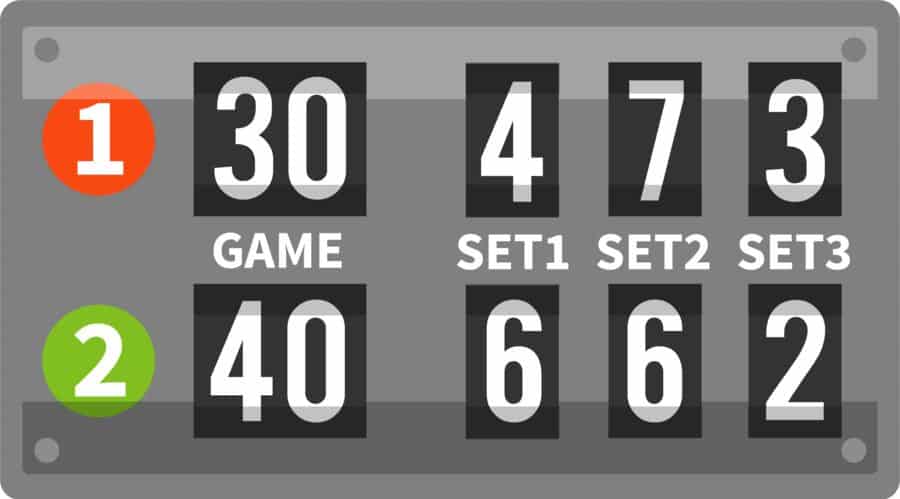Tennis is a sport with a rational system of rules and principles in place to ensure a winner at the end of each game, set, or match. Tennis is a wonderful sport to watch, but it can be difficult for viewers to understand how to read the tennis scores at first. The game must be completed until one of the players wins and the other loses. A tennis match, unlike certain other sports, can never end in a tie.
Why do they keep mentioning Juice? The good news is that once you get the hang of it, the tennis scoring system is simple to learn and memorize. Love? Deuce? Advantage? What exactly does it all imply? Tennis has long had the most unusual scoring system, and the roots of the sport’s scoring system are a bit hazy.
The game begins with one player serving first. A player who serves first will serve for the duration of the game. A player must score at least four points to win a game (more if the game gets to Deuce). Before hitting the ball to the opposite player, the server’s score is revealed first. The following is the terminology used to keep track of tennis scores:
- Earned Points 0 = 0 Games Points or ‘Love’
- 1 game point = 15 game points
- Earned Points 2 = 30 Game Points
- 3 game points = 40 game points
- 4 points equal’ game over (2 Point Advantage Required)
How to Read Tennis Scores:
In tennis, a set is defined as a player winning a minimum of six games with a two-game advantage over their competitor. 6-4, 6-3, 6, 2, 6-1, or 6-0 are examples of possible score outcomes. If there are unique rules in play, some sets might run-up to an hour or even longer.
These rules may include tie-breaker scoring or no-ad scoring, which can drastically change the players’ match strategy. The ‘Pro set,’ which makes games end faster, is a typical set of rules seen in competitive games. When playing a ‘Pro set’ game of tennis, the winner must win at least 8 games and have a two-game advantage.
When the total number of games in a set is an odd number, the players will rotate continually during the match. For example, a set’s overall game score could be 5-4, resulting in a total of 9 games. Before commencing the next game, the players will switch sides.
Tennis Scoring Term Means:
Tennis’ first three points are 15, 30, and 40, rather than the usual 1 or 2 runs seen in other sports. If you’re hoping for a solid answer as to why tennis utilizes the scoring system it does, you’ll be disappointed to learn that the tennis scoring system as we know it today has no obvious genesis. There are a few other theories, though:
Tennis scorekeeping was “initially” done on clock faces, with hands placed at 15, 30, and 45-minute periods. To accommodate for the advantage, the 45-minute mark was reduced to 40 minutes, with the game ending at 60 minutes. The addition of minute hands to clocks did not occur until the 17th century; hence this is more of a notion or urban legend than fact.

The numbers refer to a French game called jeu de paume, which is similar to tennis but is played with a hand instead of a racket. The serving player would be permitted to move up to 45 feet after every point scored. A 90-foot court was used during the game. Tennis as we know it today evolved from the game of jeu de paume.
The use of the word “love” is similar: There is no definitive answer; however it is most likely derived from the French term “l’oeuf,” which means “the egg.” If you’ve never seen an egg before, it looks like a 0.
After a Deuce:
Deuce is when both players reach 40 points (not 40-all). Following a deuce, a player must score 2 successive points to win the game. “Advantage” refers to the first point scored following a deuce. When a player gains an edge, their next point is the winner. The score goes back to deuce if that player loses the point. The server has an “advantage in,” whereas the player receiving the serve has an “advantage out.”
Tie Break Score:
A tie-break is used if a set is tied after six games. In this unique game, the first player serves for only one point, followed by each player serving for two points in a row. Each point earned adds one point to the player’s tie-break score, which is significantly simpler than in a traditional game.
Final Words
The tennis scoreboard, while initially complex, is quite simple to read provided you have a fundamental understanding of the tennis scoring system.
